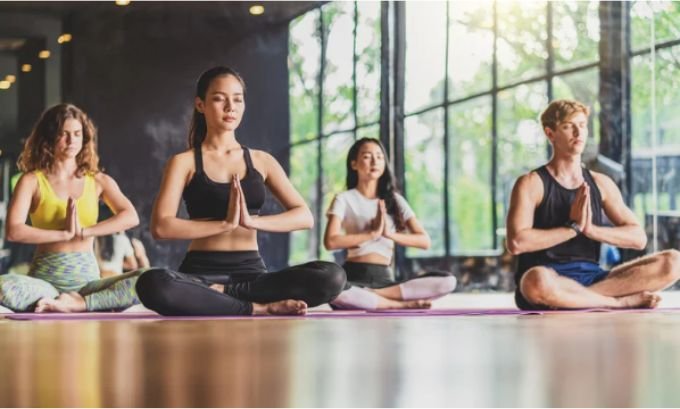Yoga is a powerful practice that connects the body, breath, and mind through physical postures, breathing exercises, and meditation. It’s an ancient discipline designed to enhance well-being and foster a deeper sense of self-awareness. If you’re looking to understand this practice on a deeper level, here is everything you need to know about yoga, explained in a simple, relatable way.
This guide will demystify yoga, taking you from its ancient philosophical roots to its modern, science-backed benefits. We’ll explore its core components, share authentic experiences, and give you the confidence to step onto the mat.
Table of Contents
Demystifying Yoga: More Than Just a Workout
At its heart, yoga is a practice of connection. The word itself comes from the Sanskrit root “yuj,” which means “to unite” or “to yoke.” This refers to the union of your individual consciousness with a universal consciousness, or more simply, bringing your mind and body into a state of harmony. This is achieved through a trio of core practices: physical postures (asana), controlled breathing (pranayama), and mindful meditation (dhyana).
While the modern image of yoga often focuses on impressive flexibility and physical fitness, its traditional goals were geared toward spiritual development and inner peace. Today, an estimated 300 million people worldwide practice yoga for countless reasons, finding it a versatile tool for both physical health and mental clarity.
Tracing the Path: Yoga’s Origins and Evolution
Yoga’s history is a long and fascinating one, with its earliest concepts referenced in the Rigveda, one of the most ancient sacred texts of Hinduism, dating back thousands of years. These early texts laid the philosophical groundwork for what would become a structured practice.
The systemization of yoga is largely attributed to a sage named Patanjali. Around 400 CE, he authored the Yoga Sutras, a collection of 196 concise statements that serve as a philosophical guide for the practice. This text introduced the “eight limbs of yoga,” a comprehensive framework for living a meaningful and purposeful life.
For centuries, yoga was a spiritual discipline taught directly from teacher to student in India. It began to gain recognition in the West in the late 19th and early 20th centuries, when influential teachers introduced its teachings to new audiences. Over time, it has evolved into the diverse global practice we know today.
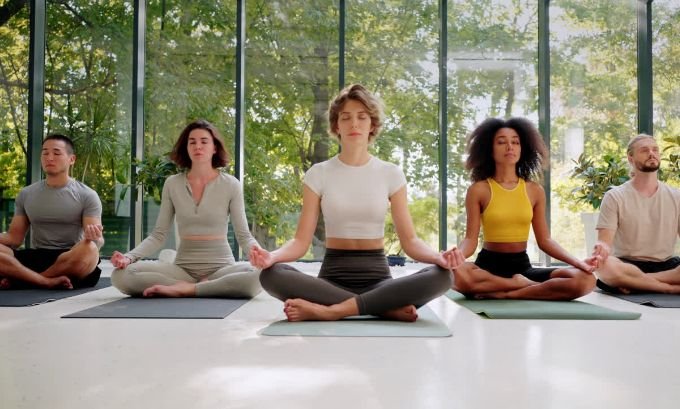
The Eightfold Path: Patanjali’s Guide to a Meaningful Life
The sage Patanjali is often revered as the “father of yoga” for his brilliant distillation of yogic philosophy into a practical guide. His eight limbs are not a linear checklist but rather eight interconnected aspects of a single, holistic practice.
- Yama (Ethical Standards): These are universal principles that guide our interactions with others. They include non-harming (ahimsa), truthfulness (satya), not stealing (asteya), moderation (brahmacharya), and non-possessiveness (aparigraha).
- Niyama (Self-Discipline): These are personal practices for self-care and inner reflection. They include purity (saucha), contentment (santosha), focused effort (tapas), self-study (svadhyaya), and surrender to a higher power (ishvara pranidhana).
- Asana (Physical Postures): This is the most widely recognized limb. The practice of asana is designed to prepare the body for meditation by building strength, flexibility, and stability.
- Pranayama (Breath Control): Pranayama consists of techniques to regulate the breath, which is seen as the body’s life force energy (prana). These practices help to calm the nervous system and focus the mind.
- Pratyahara (Sense Withdrawal): This limb involves consciously drawing one’s awareness inward, away from the distractions of the external world. It is the crucial bridge from external to internal practice.
- Dharana (Concentration): Once awareness is turned inward, Dharana is the practice of fixing the mind on a single point of focus, like the breath or a mantra.
- Dhyana (Meditation): Where Dharana is the act of one-pointed focus, Dhyana (meditation) is the state of being effortlessly absorbed in that focus, a continuous flow of uninterrupted awareness.
- Samadhi (Enlightenment): The final limb is a state of profound unity and bliss, where the sense of individual self merges with the universal consciousness.
For a deeper dive into the origins, benefits, and styles of yoga and Everything You Need to Know About Yoga, check out this detailed guide in this articles ponta.in, mumbaitimes.net, gogonihon.jp.net or mindjournal.co
My First Steps on the Mat: A Personal Story
I first tried yoga because I was looking for a way to de-stress from a demanding job. My shoulders felt permanently attached to my ears, and my mind was a constant buzz of to-do lists. I signed up for a beginner’s Hatha Yoga class, hoping for a bit of quiet and a good stretch. I got both, but I also discovered something much more transformative.
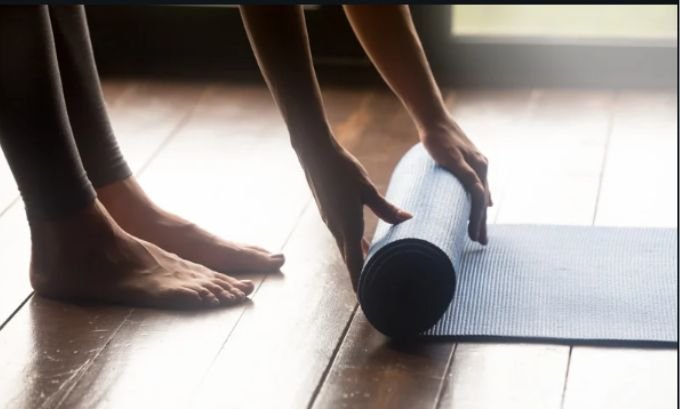
Those first few classes were humbling. I wobbled in balancing poses and my muscles shook in positions that looked deceptively simple. The instructor, however, kept reminding us to “find ease in the effort” and to use our breath (pranayama) as an anchor. I started to notice that when I focused on a slow, steady breath, my body would soften and my mind would quiet down, even in a challenging asana.
The breakthrough moment for me happened during a restorative class. We were holding a supported heart-opening pose for several minutes. As I lay there, propped up by bolsters, I felt a sudden emotional release. It was as if the physical opening of my chest had created space for pent-up stress to finally escape. It was then that I truly understood that yoga works on a much deeper level than just the physical. It’s a practice that heals from the inside out.
What Yoga Has Taught Me
- Resilience, Not Perfection: Yoga taught me to be okay with imperfection. Some days I feel strong and balanced; other days I can barely hold a pose. The practice is about showing up, not about being perfect.
- The Power of the Pause: The emphasis on breath has taught me to pause before reacting, both on and off the mat. This simple act has improved my relationships and reduced my daily stress.
- A Deeper Body Awareness: I’ve learned to listen to my body’s signals. I know when to push myself and, more importantly, when to back off and rest.
- Mental Stillness: The moments of quiet I find during meditation (dhyana) have become invaluable. It’s like hitting a reset button for my mind.
Where I’m Still a Work in Progress
- Consistency Over Intensity: My biggest challenge is maintaining a consistent practice when life gets hectic. I’m learning that a 15-minute session is better than no session at all.
- Exploring Different Styles: I tend to stick to my favorite Vinyasa classes. I want to branch out and try something new, perhaps even facing the heat of a Bikram Yoga class.
- Living the Philosophy: I am continually working to integrate the ethical principles of yoga, like non-harming and contentment, more deeply into my daily life.
The Body’s Energy Map: An Introduction to the Chakras
In yogic anatomy, we have a subtle energy body that coexists with our physical form. This energy system contains chakras, which are vortexes of spiritual power. The word “chakra” means “wheel” in Sanskrit, as these centers are thought to spin, regulating the flow of energy (prana) throughout our system. When these wheels are open and balanced, we feel healthy and vibrant. When they become blocked, it can lead to physical or emotional imbalances.
There are seven primary chakras located along the central channel of the body:
- Muladhara (Root Chakra): Located at the base of the spine, it’s our foundation, connected to feelings of safety and security.
- Svadhisthana (Sacral Chakra): Found in the lower abdomen, it governs creativity, emotion, and pleasure.
- Manipura (Solar Plexus Chakra): Situated in the upper abdomen, it is the center of personal power, confidence, and willpower.
- Anahata (Heart Chakra): In the center of the chest, this chakra relates to love, compassion, and connection.
- Vishuddha (Throat Chakra): Located at the throat, it governs communication and self-expression.
- Ajna (Third Eye Chakra): Found between the eyebrows, it is the center of intuition and inner wisdom.
- Sahasrara (Crown Chakra): At the top of the head, this is our connection to the divine and higher consciousness.
Looking to enhance your yoga practice with quality mats, props, or wellness essentials? Visit TokyoMart.store for handpicked gear to support your journey.
Finding Your Flow: An Overview of Popular Yoga Styles
The world of yoga is incredibly diverse, with a style to suit almost any preference or fitness level. Finding the right one is a matter of personal exploration.
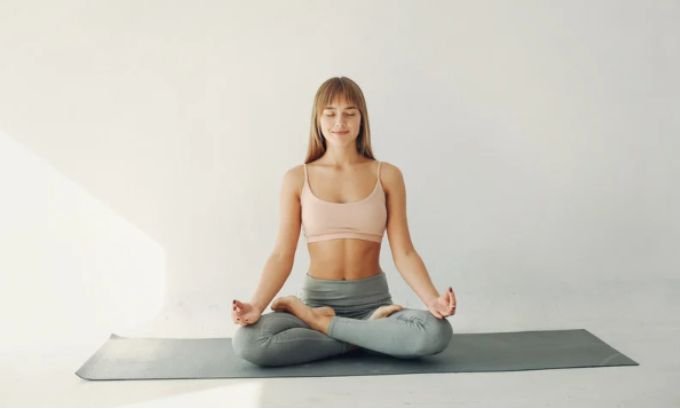
Hatha Yoga
Hatha Yoga is a great starting point for anyone new to the practice. It’s a general term for yoga that teaches physical postures. Hatha classes are usually slower-paced, with a focus on learning foundational asana and proper alignment.
Bikram Yoga
This is a specific type of hot yoga created by Bikram Choudhury. A Bikram Yoga class follows a set sequence of 26 poses and two breathing exercises in a room heated to approximately 105°F (40.5°C). The heat is intended to allow for deeper stretching and to promote detoxification. It’s a very intense and structured practice.
Vinyasa Yoga
Vinyasa classes are known for their fluid, flowing sequences that link movement with breath. The pace can vary from slow to vigorous, but the emphasis is on creating a moving meditation.
Ashtanga Yoga
Ashtanga is a physically demanding style that follows a prescribed sequence of postures. It’s known for its disciplined approach and is a great practice for building strength, stamina, and focus.
Restorative Yoga
This is a practice of deep relaxation. In a restorative class, you will hold gentle poses for extended periods, fully supported by props like bolsters and blankets. The goal is to calm the nervous system and restore the body’s energy reserves.
A Quick Guide to Choosing a Style
| Yoga Style | Pace & Feel | Best Suited For | Key Characteristic |
|---|---|---|---|
| Hatha Yoga | Slow, gentle, instructional | Beginners, learning alignment | Focus on individual poses |
| Vinyasa Yoga | Flowing, dynamic, varied | Those who enjoy movement and variety | Breath-synchronized sequences |
| Ashtanga Yoga | Rigorous, disciplined, athletic | Those who like routine and a challenge | A set series of advanced postures |
| Bikram Yoga | Intense, sweaty, structured | Those seeking a detox and deep stretch | A specific 26-pose sequence in a hot room |
| Restorative Yoga | Passive, deeply relaxing, quiet | Stress relief, recovery, everyone | Long-held poses supported by props |
The Science Behind the Practice: What Research Says
While yogis have experienced its benefits for centuries, modern science is now providing evidence to back up these claims. Prestigious institutions like the National Institutes of Health (NIH) have funded numerous studies that demonstrate the positive impact of yoga on both physical and mental health.
According to research supported by the NIH, a regular yoga practice can:
- Reduce Stress: The combination of movement, breathwork, and meditation has been shown to lower levels of the stress hormone cortisol.
- Improve Mental Health: Studies indicate that yoga can be an effective complementary therapy for depression and anxiety, helping to improve mood and promote feelings of well-being.
- Enhance Sleep Quality: Many people find that yoga helps them fall asleep faster and enjoy more restful sleep.
- Increase Strength and Flexibility: Yoga is a full-body workout that improves muscle tone, joint mobility, and balance.
- Alleviate Chronic Pain: Research has shown that yoga can help manage conditions like chronic low back pain, arthritis, and fibromyalgia.
- Support Cardiovascular Health: Regular practice can contribute to lower blood pressure and improved circulation.
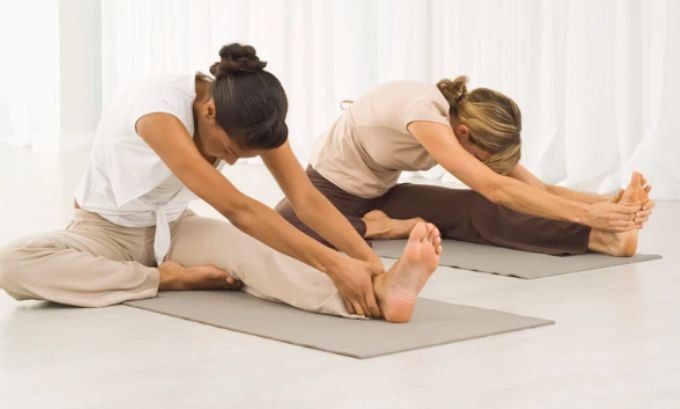
Frequently Asked Questions (FAQ)
1. Do I need any special equipment to start yoga?
All you really need is a bit of space and comfortable clothes. A yoga mat is highly recommended for cushioning and grip, but you can start without one.
2. How is yoga different from other forms of exercise?
While many yoga styles offer a great physical workout, the key differentiator is the integration of mindful breathwork (pranayama) and meditation (dhyana). This mind-body connection makes it a holistic practice.
3. I’m not flexible at all. Can I still do yoga?
Absolutely! This is one of the biggest myths. Yoga is a practice that will help you become more flexible. It’s not a prerequisite. A good teacher will offer modifications to make the poses accessible to you.
4. Is yoga a religion?
No. While yoga has its roots in the spiritual traditions of ancient India, it is a philosophy and a system of practices for well-being. It can be practiced by anyone, regardless of their spiritual beliefs.
5. How often should I practice to see benefits?
Consistency is more important than intensity. A short practice of 20 minutes a few times a week is often more beneficial than one long class every so often.
6. Is a hot style like Bikram Yoga better for you?
Not necessarily. While some people love the heat and the deep sweat of a Bikram class, it can be too intense for others. The “best” yoga is the one that feels good for your body and that you can stick with.
7. Can yoga help me lose weight?
Yes. Dynamic yoga styles can burn calories, and the practice as a whole promotes mindfulness, which can lead to healthier eating habits and reduced stress-related weight gain.
Your Path Starts Here
We’ve journeyed through everything you need to know about yoga, from its philosophical foundations in the Rigveda and the teachings of Patanjali to its modern applications and scientifically-backed benefits. We’ve explored the core practices of asana, pranayama, and meditation, and looked at how they can work together to bring balance to your life.
Yoga is a versatile and deeply personal practice. It meets you where you are and offers a path to greater health, peace, and self-awareness. The most profound part of the journey is not in mastering a difficult pose but in the simple act of showing up for yourself.
Ready to begin? Find a beginner-friendly class in your community or explore the wealth of online resources available to start your practice from the comfort of your home.
Author Bio:
This article was written by a certified yoga instructor and wellness journalist with over a decade of experience practicing and teaching yoga. With a focus on making ancient wisdom accessible for modern life, the author is dedicated to helping others discover the transformative power of a mindful yoga practice.




